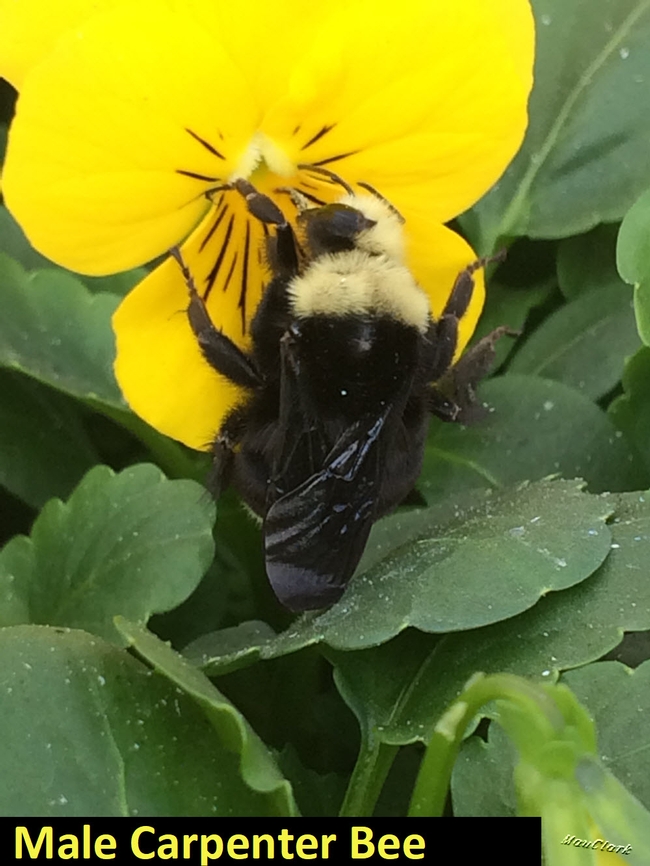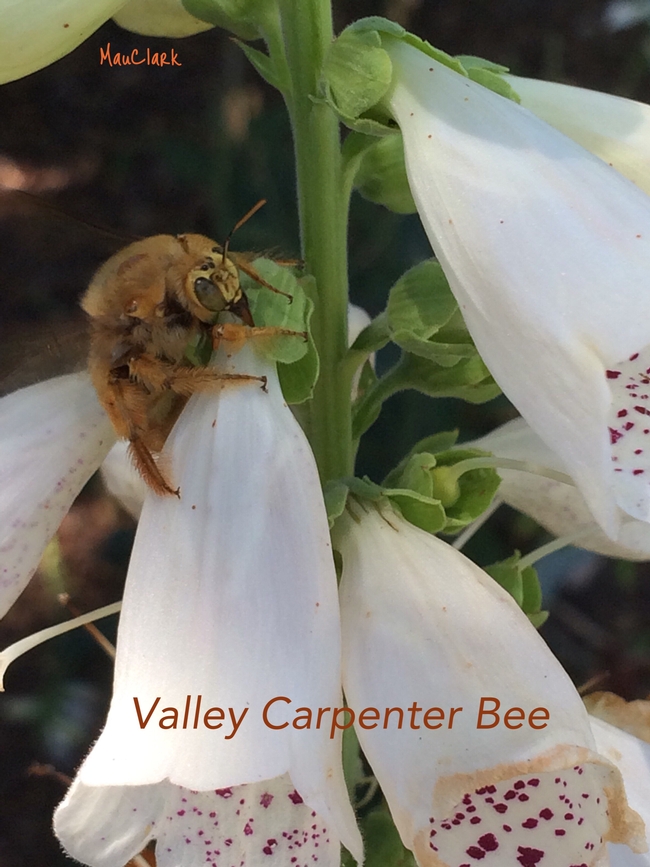- Author: Maureen Clark
I was aghast when my neighbor walked up to me and asked, "how do I get rid of the bumble bees around my house? They might be carpenter bees and I have to get rid of them." So, it got me thinking, maybe I should do a blog about carpenter bees and bumblebees.
Carpenter bees
The carpenter bee is mostly a solitary bee and doesn't live in a colony. Sometimes they a have small family living in the nest. Only the females drill out holes in wood to create the nest. Once the nest is built the female will lay her eggs, each in a separate chamber, and then pack them full of nectar. Carpenter bees live up to three years, which is a long life for such big bees. The young daughters often live in the nest with their mothers. The mated female and the male will die in their nest.
Carpenter bees only seek out wood that is untreated, especially redwood, cedar, pine, and cypress. They prefer wood that is weathered and not rotting. They do not eat the wood. If you do have a problem with the drilling at your house or favorite chair, try these solutions. Paint or stain your wood. Try playing loud music, they don't like the vibrations. Carpenter bees are useful and beneficial, they are nature's recyclers.
They are very territorial but their defensive buzzing is more for show. These gentle giants very rarely sting. The male carpenter bee is the defender of the nest and doesn't have a stinger. Female bees can sting but only if provoked while protecting their nest.
The female California carpenter bees have little to no hair on their lower abdomen and it looks shiny. These female carpenter bees have all black or black with metallic blue lower abdomens. While the male bees can be fuzzy and yellow, aka the “teddy bear” or only have yellow markings, on the lower parts of their face and top of their thorax.
They have an interesting way of getting pollen from the flower's anthers. Carpenter bees use sonic vibrations to fragment the cells of dry pollen. This type of pollen gathering is called “buzz pollination”. When it comes to nectar, they have a unique way of foraging it from flowers they can't fit into. They cut a slit at the base of the corolla (all the petals of a flower) and retrieve the nectar without ever pollinating the flower. But there are lots of flowers that are large enough for them to fly into to get nectar. The flowers that carpenter bees like are California poppies, Palo Verde, California Lilac, California Flannel bush, Redbud, and Sage.
Bumblebees
The bumblebee has soft, fuzzy hairs all over their bodies. They are mostly plump and stout-bodied. They have a proboscis, which is a tongue-like apparatus and used to gather pollen and nectar.
There are approx. 40 species of Bumblebees (Bombus) in the U.S. There are approx. 250 species of Bombus in the world and 16 subgenera.
Some bumblebee species have evolved longer faces and tongues to extract nectar from flowers with long corollas. They are a vital pollinator of native flowers in our natural ecosystem. Bumblebees inhabit temperate regions worldwide. They are the dominant pollinators in northern climates. They are important in boreal forests, prairies, coastal plains, and mountain areas. They have the ability to survive in cold climates, which makes them important pollinators of alpine flowers.
Different species live in various microhabitats. The diversity of bumblebees can be found in along stream beds, burned or fallen logs, and a variety of flowers. Each different microhabitat provides a different resource and a greater chance to see a new species of bumblebee. Most bumble bee nests are found underground in abandoned rodent burrows, holes in building foundations, and stacks of firewood. Some species have over 1,000 bees in the nest, while other species rarely have over 50 bees.
Bumblebees are crucial to pollinating wildflowers and very effective at pollinating plants in the Solanaceae family. Even though many of the nightshade plants (eggplants, peppers, and tomatoes) are self-pollinating, the bumblebees help release pollen from within the flower. They also pollinate a variety of our fruits and vegetables such as apples, apricots, blueberries, melons, squash, raspberries, and onions.
Be humble to the big bees, they are adorable and essential to our ecological system.





